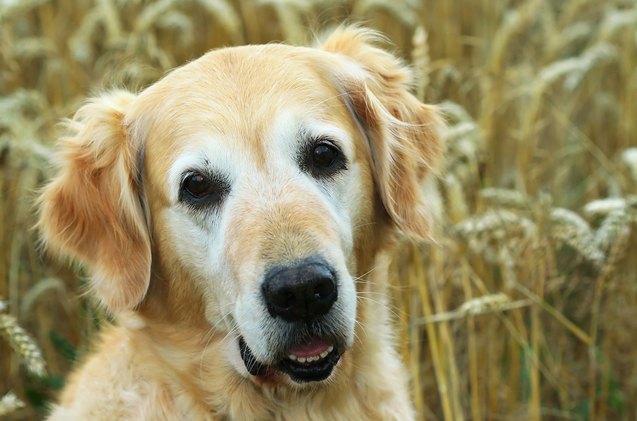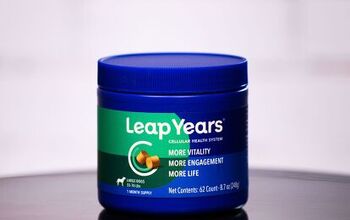What Are The Most Common Dog Food Allergies?

Itchy paws, red ears, loss of fur – could your dog be suffering from common dog food allergies? Here are some of the most frequent causes and what to do about it.
Food allergies and intolerances in humans seem to be on the rise, but did you know that dogs can be affected by food allergies as well? The same foods that cause allergies in humans can also cause allergic reactions in dogs and they can be severe in some cases. Let’s talk about common dog food allergies well as the signs of food allergies and treatment options.
Related: Is There A Difference Between Natural Vs Organic Dog Food?
Common Dog Food Allergies
Food allergies account for about 20 percent of all allergies affecting dogs and they affect all breeds, ages, and sexes similarly. In dogs, food allergies can develop as early as five months of age or as late as 12 years. In many cases, dogs with food allergies also have contact allergies to things like dust, perfumes, or certain chemicals. Some of the most common food allergens affecting dogs include:
- Beef
- Dairy
- Chicken
- Lamb
- Fish
- Eggs
- Corn
- Wheat
- Soy
Related: Gluten Allergies And Intolerance In Dogs
As is true for humans, there is a difference between food allergies and food intolerance in dogs. Food intolerance typically produces gastrointestinal symptoms like vomiting and diarrhea while food allergies produce allergic reactions like itching and skin problems. The treatment for food allergies and food intolerances is the same – avoidance of the offending food.
Signs and Symptoms of Food Allergies
The symptoms of food allergies in dogs are similar regardless of what type of food is causing the reaction. The most common symptom is intense itching, especially on the face, feet, ears, and forelegs. Some dogs experience chronic or recurring ear infections as well as hair loss, hot spots, and recurring skin infections that do not respond to treatment. Excessive scratching is a common sign of food allergies, as is increased frequency of bowel movements. It can sometimes be difficult to distinguish between food allergies and atopic (contact) allergies. A common sign of food allergies is that the symptoms persist all year round and if skin problems do not respond to medical treatment.
Treatment for Food Allergies
The best way to identify your dog’s food allergen is to conduct a food trial. During a food trial, you would feed your dog a diet that consists of a novel protein and carbohydrate for 12 weeks until all signs of the allergy have disappeared. Novel protein sources might include rabbit, venison, or even kangaroo while novel carbohydrates include things like sweet potato or brown rice. After the 12 weeks, you would then introduce common food allergens back into the diet one at a time and watch for a reaction. Once you have identified the culprit, you then simply need to keep your dog on a diet that does not contain that food allergen.
Common Food Allergy-Related Mistakes
When it comes to addressing food allergies in your dog, there are some common mistakes that you may experience along the way.
Don’t Forget About the Treats
When you make the commitment to a food trial, there is more to consider than just the ingredients in your dog’s food. You need to also pay careful attention to any treats or snacks that you may be feeding in between mealtimes. Food allergies can be incredibly sensitive, and it may take as little as a single treat with the offending allergen to set your dog off and destroy your food trial results entirely.
Get the Whole Family On-Board
This is a mistake often seen in larger families. If there are multiple family members that all have access to your dog on a regular basis, everyone needs to be on the same page in terms of any dietary rules and restrictions. For example, if you believe that your dog may be allergic to chicken and put the time into selecting chicken-free treats and food, but your child is still feeding small pieces of chicken under the dining room table or behind your back, you are fighting a losing battle. Worse yet, it could leave you believing that chicken isn’t actually the cause of your dog’s problems even if it is!
Failing to Read Past the First 5 Ingredients
There is a lot of advice out there pointing at the first 5 ingredients of a dog’s food as the most important. While it’s true that these ingredients hold a lot of weight, making up a good majority of your dog’s meal, don’t discount the smaller ingredients later on the list. For example, there are many fish-based dog foods that still contain chicken by-products or other ingredients that prevent the food from qualifying as a single-protein diet.
Don’t Forget to Address the Non-Food Allergens
Of course, there is always the possibility that the allergic reaction you are seeing is caused by something other than your dog’s food. There is no way to completely eliminate all environmental allergens (unless you live in a bubble with no plant life), but there are some steps that you can take to help reduce the risk that your dog is reacting to something in your home or yard.
First, always watch for signs that your dog may be dealing with fleas. These tiny, hard-to-spot pests can trigger a reaction called ‘flea allergy dermatitis’ which can mimic the skin conditions associated with food allergies. Use a flea prevention product all year long. If you notice that your dog is biting or scratching at himself excessively, search for any signs of flea droppings. They look like black rice and the easiest place to see these is often around the groin area.
Another common environmental trigger to watch out for is the use of scented laundry products. Dogs that are sensitive to the chemicals in these products may experience a reaction simply from cuddling with a person wearing clothes that have been washed using them or sleeping on contaminated bedding.
Food allergies in dogs are becoming an increasing concern with pet parents, and there are more formulas on the market that eliminate the offending ingredient while providing all the nutrients your dog needs. If you suspect that your dog is suffering from a food allergy you should consult with your veterinarian and take steps to identify the allergen and then eliminate it from your dog’s diet.

Kate Barrington is the loving owner of two cats (Bagel and Munchkin) and a noisy herd of guinea pigs. Having grown up with golden retrievers, Kate has a great deal of experience with dogs but labels herself a lover of all pets. Having received a Bachelor's degree in English, Kate has combined her love for pets and her passion for writing to create her own freelance writing business, specializing in the pet niche.
More by Kate Barrington






















